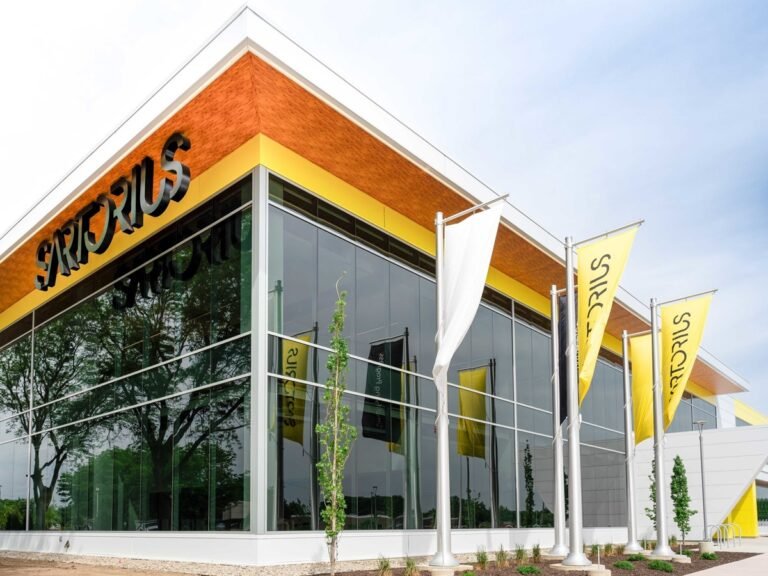[ad_1]

Sartorius, a Germany-based life sciences research and biopharmaceutical company, has completed construction on a $100 million, 130,000-square-foot facility in Ann Arbor, Mich. The group broke ground on its bioanalytical center of excellence in Research Park’s Tech Loop two years ago. Hobbs+ Black Architects designed the project, and JS Vig Construction Co. served as general contractor.
Sartorius, a provider of highly automated bioanalytical solutions for biopharmaceutical development, currently employs approximately 140 people and plans to more than double its workforce within the next few years. The new company flagship location at 3874 Research Park Drive will consolidate multiple existing locations and capabilities in Ann Arbor and Washtenaw County and also provide space for future expansion.
See also: Life sciences outlook is bright
The company has had a presence in the city for several years, following the acquisition of Essen Bioscience in 2017 and Solo Hill in 2020. With around 60 production and sales sites around the world, Sartorius employs around 2,600 people across 12 locations in North America.
Strategic Location
Company executives noted that Ann Arbor is strategically located near customers and top universities such as the University of Michigan, providing easy access to talent, technology and logistics.
The Center of Excellence will serve multiple functions for the company. It will house manufacturing and service areas, biology laboratories, warehouses, offices, training space and a customer interaction center. Sartorius will develop and manufacture a range of bioanalytical equipment at the facility, focusing on providing advanced solutions to aid in the development of medicines that help treat, prevent and halt the progression of diseases. The facility will also provide particle validation services and manufacture microcarriers used in cell culture processes.
Sartorius is pursuing LEED Gold certification for the facility, and sustainable features will include 200 kilowatts of green energy provided by solar panels, 30 electric vehicle charging stations and a research park’s first storm water runoff pond to prevent flooding and erosion.
[ad_2]
Source link


